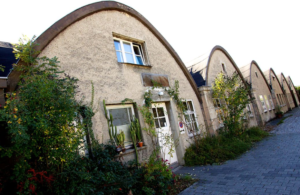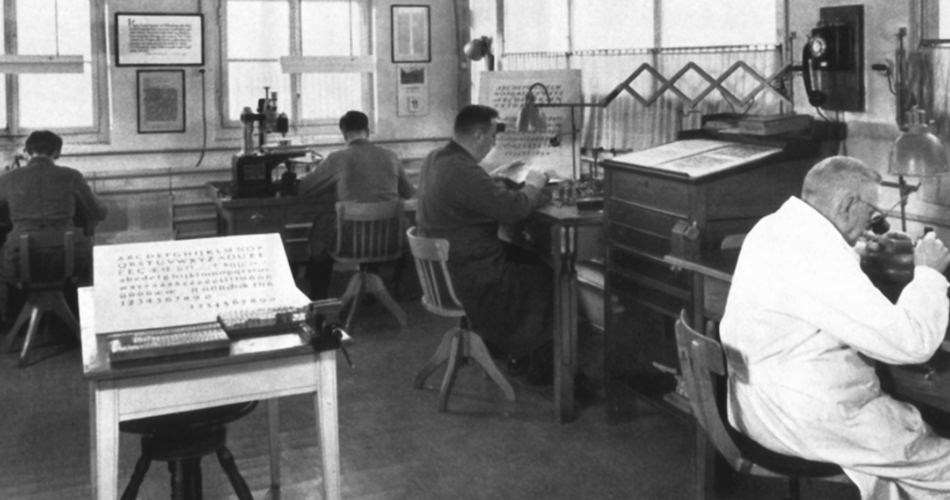Step back in time to 1950, an era when the printing industry was undergoing a transformation, and type foundries were the beating heart of typography and design. Among the most renowned of these was the Haas Type Foundry, a Swiss institution celebrated for its precision, craftsmanship, and innovation. In this article, we’ll take you on a virtual tour of the Haas Type Foundry in 1950, exploring its history, processes, and legacy. Along the way, we’ll ensure this content is optimized for SEO, making it easy for readers and search engines alike to discover this fascinating piece of history.
Contents
The Haas Type Foundry: A Brief History

Haas Type Foundry
The Haas Type Foundry, located in Münchenstein, Switzerland, was established in 1592 and became one of the most influential type foundries in the world. By 1950, it was renowned for producing high-quality metal typefaces that were used in printing presses globally. The foundry was particularly famous for its collaboration with legendary type designer Max Miedinger, who later created the iconic Helvetica typeface in 1957.
In 1950, the Haas Type Foundry was at the peak of its craftsmanship, blending traditional techniques with modern innovations. Let’s step inside and explore what made this foundry so special.
A Day at the Haas Type Foundry in 1950
1. The Art of Type Design
The journey begins in the design studio, where skilled typographers and designers meticulously crafted typefaces by hand. Using pencils, rulers, and drafting tools, they drew each letterform with precision, ensuring balance, readability, and aesthetic appeal. These designs were then transferred to patterns, which served as templates for creating the metal type.
2. The Matrix and Punch Cutting Process
Next, we move to the punch-cutting room, where master craftsmen used steel punches to carve the letterforms into brass matrices. This process required immense skill and patience, as even the slightest error could ruin the matrix. Once the punches were perfected, they were struck into brass to create the matrices, which would later be used to cast the type.
3. Type Casting: Bringing Letters to Life
The heart of the foundry was the casting room, where molten metal (a blend of lead, tin, and antimony) was poured into molds to create individual pieces of type. The matrices were inserted into the casting machine, ensuring each letter was perfectly formed. The freshly cast type was then cooled, trimmed, and inspected for quality.
4. Sorting and Distribution
After casting, the type was sorted into cases, organized by letter, size, and style. Printers would later use these cases to set type for newspapers, books, and advertisements. The Haas Type Foundry was known for its meticulous organization, ensuring that every piece of type met the highest standards.
5. Innovation and Collaboration
By 1950, the Haas Type Foundry was embracing new technologies while preserving traditional methods. It collaborated with designers like Max Miedinger to create modern typefaces that reflected the changing aesthetics of the mid-20th century. This blend of tradition and innovation laid the groundwork for the creation of Helvetica, one of the most widely used typefaces in history.
The Legacy of the Haas Type Foundry
The Haas Type Foundry’s influence extended far beyond 1950. Its commitment to quality and innovation set a standard for the printing industry, and its typefaces continue to inspire designers today. The foundry’s collaboration with Max Miedinger on Helvetica cemented its place in design history, making it a cornerstone of modern typography.
While the foundry ceased operations in 1989, its legacy lives on in the countless printed materials that bear its typefaces and in the enduring popularity of Helvetica.
Why the Haas Type Foundry Matters Today
In an age dominated by digital design, the Haas Type Foundry serves as a reminder of the artistry and craftsmanship that once defined the printing industry. Its story is a testament to the importance of precision, collaboration, and innovation—values that remain relevant in today’s design world.
For designers, historians, and typography enthusiasts, the Haas Type Foundry offers a fascinating glimpse into the past and a deeper appreciation for the typefaces we use every day.
The Haas Type Foundry in 1950 was a hub of creativity, craftsmanship, and innovation. Its contributions to typography and design have left an indelible mark on the world, influencing everything from print media to digital design. By taking this journey into the past, we gain a deeper appreciation for the artistry and dedication that shaped the typefaces we use today.
